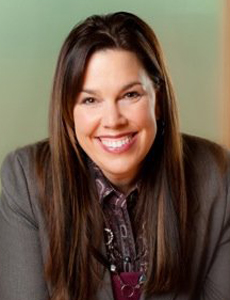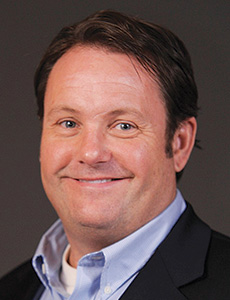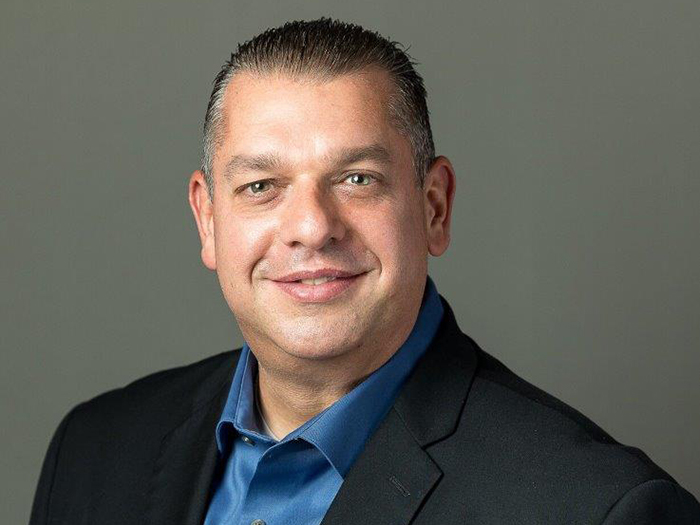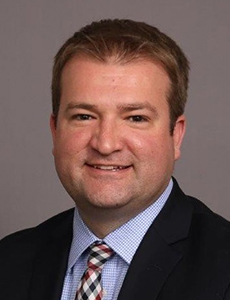Why Recent Legal Standards Are Driving Public Schools to Tackle Sexual Abuse and Molestation Claims Head On

Across the United States, state legislatures are reviewing the statute of limitations placed on reporting child sex abuse claims, with many extending the reporting window by decades.
The House of Representatives in Pennsylvania recently voted to open up a two-year window for victims of childhood sex abuse to sue their abusers. While the measure must make it through the state senate, Pennsylvania is not alone in taking renewed action on abuses that happened decades ago but could still be open to litigation today.
Signed into law in 2019 and effective Jan. 1, 2020, California’s Assembly Bill 218 removed a three-year “look back” window for previously time-barred claims. It additionally extended the civil statute of limitations on reporting childhood sex abuse to age 40 from 26.
New York’s NY Bill S2440 similarly extended the state’s statute of limitations for reporting to age 55, an extension up from age 23. This bill was signed in 2019.
Arizona, New Jersey and countless others are following suit. Colorado’s Senate Bill 73, which was proposed this year, would even remove the statute of limitations altogether, allowing victims of childhood sex abuse to come forward at any point.
These actions are good news for victims who may not feel empowered at a young age, or who may not have even understood what was happening at the time, to come forward once they’ve had time to process abuse events.

Ann Gergen, executive director, AGRiP
These bills are also leading to an uptick in sexual abuse and molestation (SAM) claims, resulting in a significant increase in lawsuits for not just the perpetrators but also the institutions that employed them.
Public entities across the U.S. are working diligently to stay abreast of these changes while simultaneously adding in measures to prevent future abuse.
Public schools in particular are diving into their risk mitigation strategies with risk managers, pool administrators and their insurance partners working together to not just stop abuse in its tracks but to prepare for inevitable shocks to their reserves as victims gain judicial retribution.
Rising Legal Costs and Nuclear SAM Settlements
SAM claims are not new to the industry by any means.
But recent events, such as the #MeToo movement, and the greater spotlight placed on sexual harassment in the last five years alone have jumpstarted the conversation around sexual abuse and molestation in public schools.
“It’s created a stronger social consciousness and a demand for social accountability,” said Deborah Callahan, executive director of the Washington Schools Risk Management Pool.
All institutions must keep a keen eye on the issue.
“As SAM claims span over many years, across a wide spectrum of industries and businesses, and impact a significant number of individuals, the economic, legal, health care and societal costs are significant,” said Carla Greaves, global chief underwriting officer for casualty at AXA XL. “Many victims of abuse suffer from long-lasting trauma and mental health issues, so individuals require ongoing health care and psychological support.”
Legal costs and settlements in SAM cases have skyrocketed, and a look at higher education shows the monetary value being placed on such claims by society:
- Michigan State settled for $500 million after its former gymnastics physician Larry Nassar was found guilty of sexually abusing minors entrusted in his care.
- When more than 700 women came forward and accused a University of Southern California’s on-staff gynecologist of sexual abuse during “routine” exams, the university was on the hook for $852 million.
- In a similar scenario, the University of California agreed to a $73 million settlement.
The heightened awareness, the mega-settlements and the states’ push to review and extend SAM reporting windows all have public schools on alert.
Funding for these institutions comes from a variety of sources, and a lot of that funding is dependent on the local economic resources available to the school district.
According to Education Week, approximately 48% of a school’s funding comes from state resources, including income taxes, sales tax and fees. Forty-four percent is contributed locally, primarily through homeowners’ property taxes. That last 8% comes from federal sources, though this is often geared toward specific programs or services.
Needless to say, a million- or billion-dollar verdict could drain a school of its reserves and contribute to underfunding in other vital educational areas.
At the same time, the need to protect children from abusive and harmful situations is of utmost priority.
“The gravity and severity of the emotional toll placed on students, their parents and the community [because of SAM claims]; the detrimental impact that this has on the reputation of the district and the emotional toll to administrators and staff; and finally, the financial cost have those of us in the sector on high alert,” Callahan said.
“Risk management cannot stand by. It must act now and focus on prevention.”
Taking the Vital First Step Toward Prevention
Trainings, video campaigns and other such methodologies to make students and faculty more aware of the situation are important to the overall in-school SAM prevention strategy.
But it shouldn’t be the only first step.

John Chino, area senior vice president, Gallagher
“A comprehensive program begins with analysis,” said John Chino, area senior vice president, Gallagher. “The pool will want to do an analysis of its [existing claims] data to reveal certain areas that need to be addressed and reviewed.”
Chino gave the example of one pool he’s worked with in California.
The pool, about three years ago, conducted a major study of sexual abuse and molestation events to see just how precisely these claims impacted the districts it monitored. The school found that the frequency of claims was low, overall, but the severity of claims costs was around 50% and rising.
Narrowing down the data, the pool could see that certain age groups and grade levels had more claims than others. Third and fourth grade appeared to have the highest vulnerability levels, with high school-aged students second.
“What they could glean from that was the perpetrators of sexual abuse on third and fourth graders differed greatly from the perpetrators seen in high school,” Chino said.
This meant that the risk mitigation strategies being used to prevent abuse in the lower grades had to be different than the strategies employed in the high schools.
“Risk management and training efforts could then be matched up with who’s most likely to be a victim and then who’s most likely to be a perpetrator,” he said.
In that same data and analytical review, it became abundantly clear that a school district’s culture also had to be brought into account.
No two school districts are the same; each is made up of faculty, staff, students and parents from different areas and different walks of life. Therefore, the risk prevention strategy that works for one district might not mesh with another.
“There’s a lot of value in taking a national perspective [of risk pools] when it comes to risk management, but also a bit of a dilemma,” said Ann Gergen, executive director of the Association of Governmental Risk Pools (AGRiP).
AGRiP is a member association for public entity risk pools that in turn service over 75,000 public entities, including public schools, across the United States, Canada and Australia. According to Gergen, risk management for SAM events can’t possibly be a one-size-fits-all.
“Every pools’ membership is different, as is every pools members’ culture and environment. There is no norm and no average. And so, pools select and offer risk management services across a spectrum that meet their own membership needs,” she said.
Risk Management for Public School Pools
For Gergen, risk management exists on a horizontal spectrum. As pools review their member needs and vulnerabilities, they can move progressively along this spectrum to see what fits best.
“One strategy might purely be awareness or education. Another strategy might be a revamp of policies and procedures. That could mean additional training,” Gergen explained.
“There are also new strategies. Different technology apps that can take training a step further than policy. Technology can deliver information in a new way, the prime example being anonymous reporting tools for abuse or bullying that have been implemented for different information flow,” she said.
Whatever mix of strategies a pool chooses, they must fit the needs of the pool members and bring in added benefit to the overall risk management plan.

Shawn McCall, senior vice president for public and nonprofit, Risk Placement Services
While a universal risk strategy won’t meet the needs of all pools, there are still some tips that risk management professionals and pool administrators can turn to as a means to get started.
Awareness of SAM’s prevalence in schools is a good start. Training faculty and staff members — not just teachers and school administrators but also custodians, coaches, volunteers and other members of the education community — to recognize poor behaviors is vital.
Also, empowering faculty, staff, students and their parents to report incidents is critical in stopping aggressors and protecting the student body in the long-term.
“It’s a powerful resource to have a third party come in to help groups think outside the box, to find additional means for protecting kids and making sure these institutions have financial stability,” added Shawn McCall, senior vice president for public and nonprofit at Risk Placement Services.
Third parties can help in analyzing the risk management policy procedures, McCall said, including “evaluating the quality of the vendors the schools are utilizing and making sure they’re performing regular background checks on faculty, staff, coaches and even volunteers.”
Collaborating with Your Insurance Team
It’s clear pools can lead the way on risk mitigation and prevention strategies.
“The insurance pools are the ones that have the best connection to their members,” said Chino.
“It’s the pools that are the drivers in this really incredible effort to prevent SAM events. They will pull [insurance professionals] in as they need to, occasionally placing us in a leadership position, introducing our pool client to a service they don’t know about or connecting them with a consultant that is able to help them. But it really is the pools driving risk management efforts.”
Such efforts will go a long way in protecting students today.
But for the claims of the past, pools have another tool in the risk management toolbox: their insurance partners.
Not surprisingly, one of the big consequences of the plaintiff’s bar’s hyper-focus on sexual abuse and molestation in schools is an increased number of claims and the increased cost of claims.
Now is the time for pools to look at their reinsurance and excess insurance to get a grip on the risk financing aspect of SAM. As nuclear verdicts start to grow, experts predict a tightening of the market that could leave pools in financial stress.
“When a reinsurer changes the aggregate limit or the specific limit or the sublimit, or even the pool’s retention, that also has a cascading financial impact on the pool. And it can have a cascading financial impact on pool members,” Gergen said.
“The big conversation right now has to be around what capacity do I have and at what limits? And then at what price, and what are the consequences of any of those changes that I have to manage at my pool level?”
Pools shouldn’t give up the good fight, either: “Pools engage in risk identification, assessment, risk management, and risk treatment at the hopes of being able to discern constrains, limit claim costs and present a good outcome for both their members and reinsurers,” Gergen said.
“As an insurance partner, our goal is trying to help these groups figure out what they need to focus on,” McCall added. “It’s hugely important to work with someone who understands coverage and the resources that are out there.”
“Businesses and public institutions should seek to act quickly to investigate and resolve these types of allegations or claims,” AXA XL’s Greaves said.
“In many instances, it has been noted that businesses have dismissed allegations or taken many years to investigate and resolve these matters. Delays of this sort merely compound the problem. The abuser is allowed to affect more individuals, and therefore, the claims multiply, become more difficult to manage and in many cases become a public nightmare.” &











